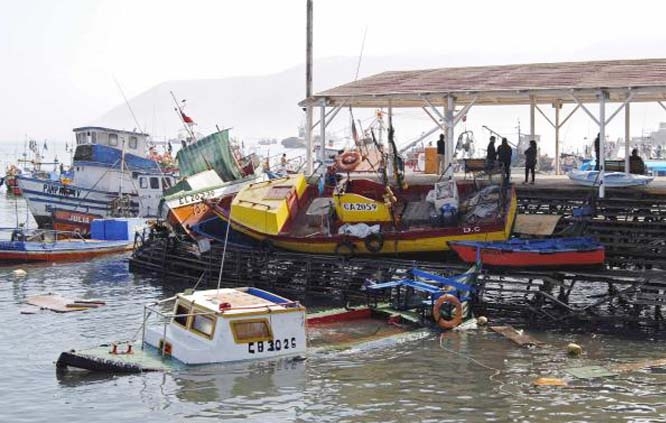
BBC Online :
A powerful 7.6 magnitude earthquake has rocked northern Chile, just over 24 hours after an 8.2 tremor killed six people, destroyed 2,600 houses and led to mass evacuations.
A tsunami alert in Chile and Peru was again issued, but was later lifted after waves of 2.4ft (0.7 meters) hit coastal areas.
Chilean President Michelle Bachelet was among those evacuated on Thursday.
The quake is the strongest of several aftershocks following Tuesday’s tremor.
There have been no reports of damage from the latest quake.
The aftershock caused buildings to wobble and people to run into the streets in the port of Iquique, which was one of the cities hit by Tuesday night’s quake.
The latest quake was centred 23km (14 miles) south of Iquique.
President Michelle Bachelet was visiting the northern city of Arica to assess damage, when a second quake struck
The US Geological Survey said the aftershock had a depth of 20km (12 miles) and was felt across the border in southern Peru, where people in the cities of Tacna and Arequipa also fled buildings.
‘Tremendous example’
President Bachelet had earlier praised the “calm behaviour” of residents following Tuesday evening’s quake.
Continue reading the main story
image of Jonathan Amos Analysis Jonathan Amos Science correspondent, BBC News
Chile is one of those countries that expects to experience large quakes. It’s only four years since the 8.8 event at Maule much further to the south.
The drivers are the same. Chile runs the boundary between the Nazca and South American tectonic plates. These are vast slabs of the Earth’s surface that grind past each other at a rate of about 80mm per year. The Nazca plate, which makes up the Pacific Ocean floor in this region, is being pulled down and under the South American coast. It makes the region one of the most seismically active on the globe.
This particular event occurred in what seismologists refer to as the Iquique seismic gap – a segment of the plate boundary that has been relatively quiet in recent times. The last big event here was the magnitude 8.8 tremor of 1877, just to the south, which claimed more than 2,000 lives.

